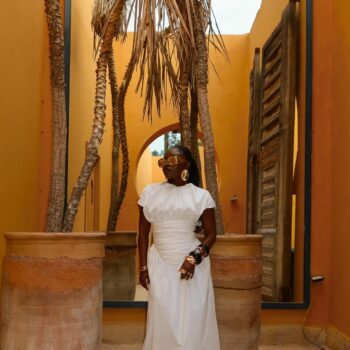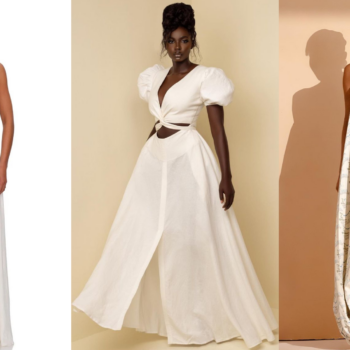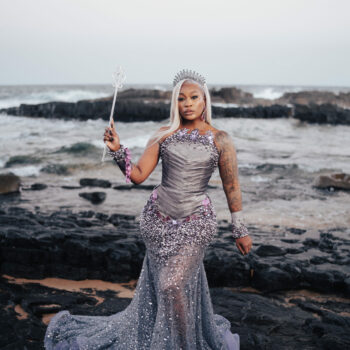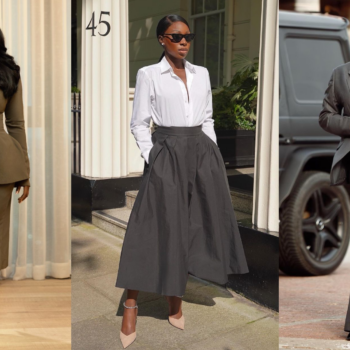Dior held a Cruise 2020 extravaganza, a plethora of events and a runway show designed for maximum media coverage and breathless social documentation, something we have come to expect from the heritage houses such as Dior, Chanel (remember Chanel’s celebration of Cuba in 2017?) et al.
This in itself is not unique – like everyone else who follows fashion, we saw the countdown to the show and watched our favourite influencers document the event itself tirelessly. It was everything you’d expect from Dior – it was beautiful, executed with precision and of course well received.
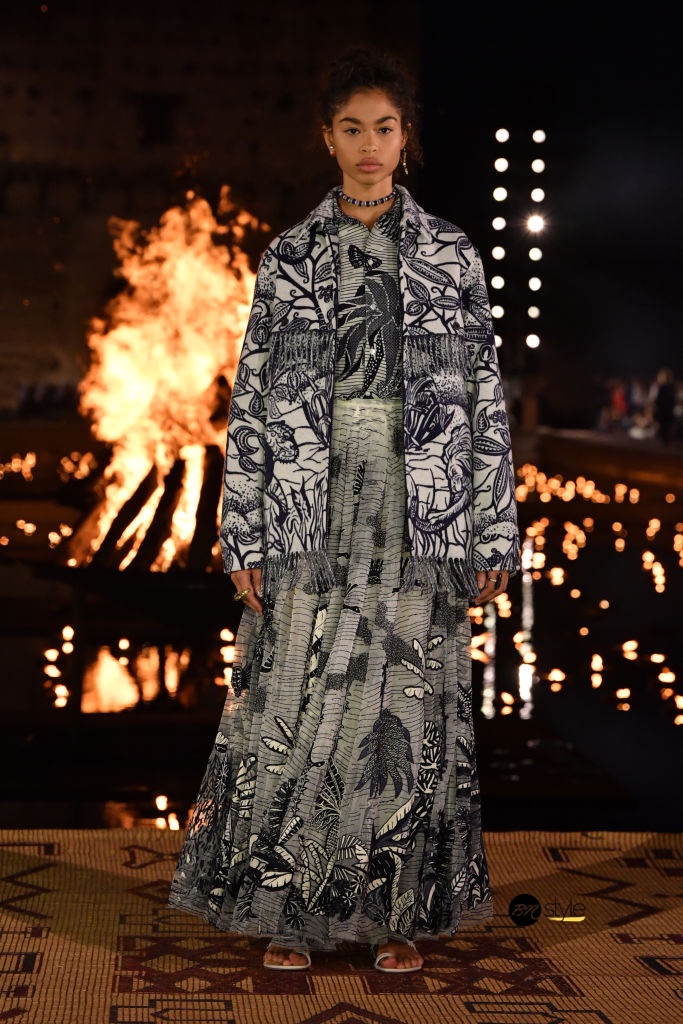
This is where we hit our first problem – Dior ensured we knew that by setting the show in Marrakech, a city itself famed for Yves Saint Laurent’s well documented love affair and the stunning ode to Islamic & Hispano-Moorish architecture, Majorelle Garden and his home, the Villa Oasis ; former haunt of luminaries like Marella Agnelli and Loulou de la Falaise, they went deeper than most houses by highlighting the ‘savoir-faire that makes wax a precious and culturally rich fabric’ working with a textile company on the continent to re-imagine well known house codes and collaborating with artisans and Sumano, an association that promotes traditional women’s crafts of Moroccan tribes for the design elements at the runway show.
On the surface it’s all good – cue social media praise how Dior is different and wonderful and this is how to do cultural appreciation right.
But.
As a colleague of mine said ‘ The colonisers just want to make sure they aren’t torn apart by the internet’. And to a large extent I agree. I think their intentions were genuine and there is some kudos to be had beyond the regular copy and paste of say a Stella McCartney or Burberry – i.e. just whack on some Ankara prints and name some vague African reference. Even if we acknowledge the tight rope they were walking with this potentially incendiary collection inspiration, there are still questions to be asked about how this was executed and how relevant it is to the African continent.
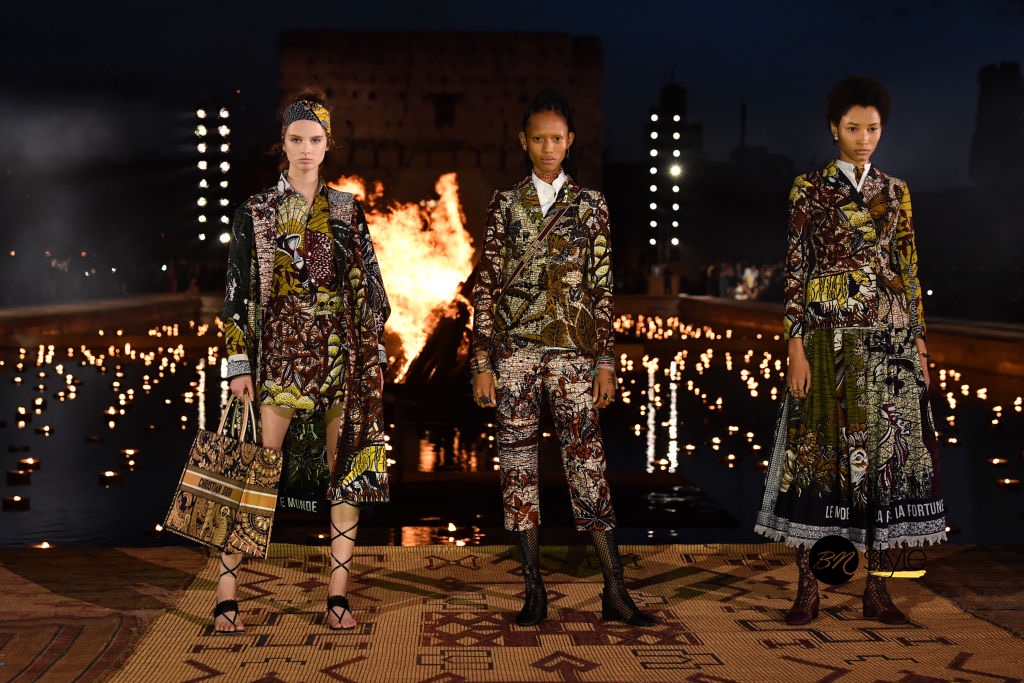
They went to painstaking lengths to assure us that ‘African artisanship’ was integrated into the collection and unlike most luxury houses, also gave credit to said artisans, highlighting the collection as a series of dialogues between true artisanship – both in the fabrication of the prints used (Uniwax created custom-made reinterpretations of 15 classic Dior prints), on cotton, spun, woven and printed on the continent and in the collaborations with three creators – African-American painter Mickalene Thomas, newly crowned BFC/Vogue Fashion Fund winner, Jamaican-British designer Grace Wales Bonner and Ivory Coast-based designer Pathé Ouedraogo.
Speaking to The New York Times:
Ms. Chiuri said before the show that part of her goal was to highlight the fact that “couture” should no longer refer simply to the work of an atelier in France, but was really about culture: about know-how and history, human labor and the touch of the human hand, all of which applied to African wax prints as well as any woven jacquards.
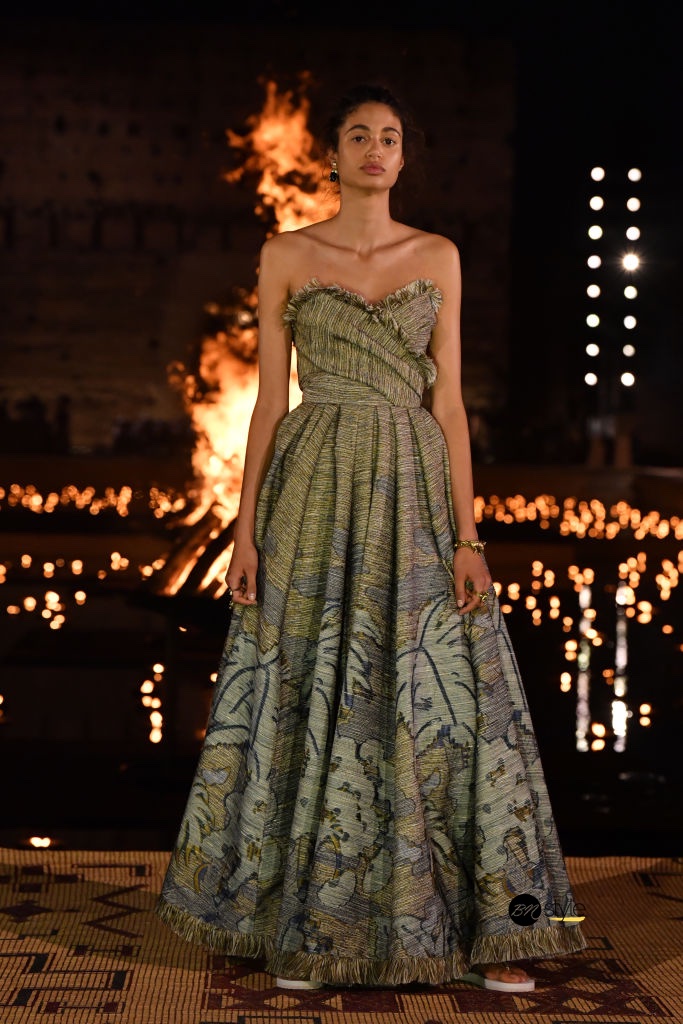
Good intentions aside, a large part of me still feels like this is just another example of the new scramble for Africa . The much touted artisan collaboration is with Uniwax, and Uniwax is in fact a VLISCO company, acquired in 2010 by the world’s leading manufacturer and marketer of Dutch wax aka ankara (VLISCO is owned and operated by Actis, previously a part of the Colonial Development Corporation until it was spun out in 2004).
Reading any of the press from the event – there is a deliberate attempt to frame this as something that is not. Painting this as an immensely laudable stride by Dior, where they, according to Anne Grosfilley, (the anthropologist who was Ms. Chiuri lead adviser on this collection and put her in touch with Uniwax) would “put in the light the talent of Africa”
Actis is a UK Based and owned company with an emerging markets investment portfolio with just over US$7bn funds under management.
VLISCO is a 174 year old Dutch company with revenues as at 2012 in excess of $291.65 million. This includes their subsidiary brands Woodin, Uniwax and GTP.
This puts paid to the imagery evoked when you hear Dior ‘worked with local artisans’. Who really benefits from this?
Another key factor that points to the shallowness of this collaboration is the distinct lack of any media, influencers or celebrities from the continent or diaspora who could have maybe given it an extra layer of authenticity. Diana Ross performed and guests included Lupita Nyong’o, Karlie Kloss, Jessica Alba, Haim, Shailene Woodley. However, this starry lineup was notably lacking in names of ANY recognisable African talent with the exception of course of Ms Nyong’o. The model lineup similarly featured diverse faces like Nigerian model Adesuwa Aighewi and Dominican model Lineisy Montero.
A cynic would say this was an exercise in the art of spin and virtue signalling. Diversity. Check. Inclusion. Check – especially following the furore caused by their ad with Jennifer Lawrence)
Fashion occupies a unique space in culture and very often can be used to identify a paradigm shift – think of how varying skirt lengths denoted larger cultural shifts, not to mention its place as a barometer for innovation and chronicle of social change. In these times in particular, fashion is a talking point for many reasons, one of which is the hot button issue of appropriation versus appreciation.
Whilst our relationship with ankara is admittedly a convoluted one ( the Stella McCartney response to the appropriation accusation was famously and I’m paraphrasing ‘ you can’t appropriate something that was itself appropriated’ stressing their relationship with Vlisco and its storied history and ownership of the fabric) and companies like Vlisco have in fact brought in money into the various African economies they operate in, in the form of jobs and skills exchange. They have also collaborated extensively with talented creatives like Tokyo James and Gozel Green on exclusive projects.
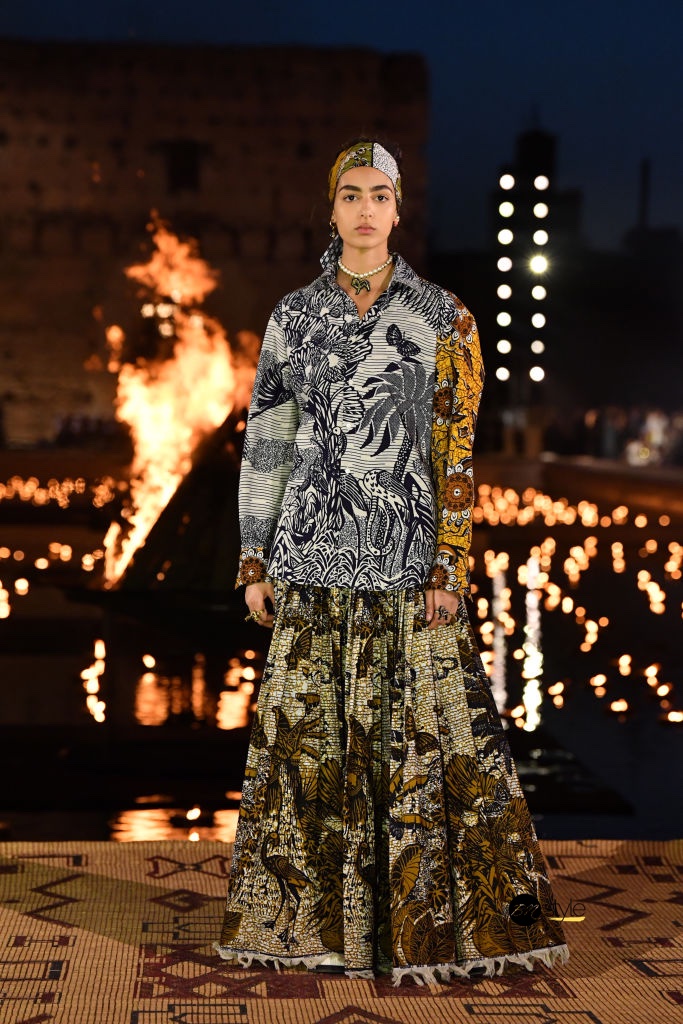
There is still the question of the Western lens. It continues to boggle the mind that a continent as diverse as ours continues to be all lumped together due to a specific mental laziness that occurs only in the West. From our names, to the differences in our countries, to our individual cultures – there’s a reluctance to learn, the same way we are expected to know everything about the West, but they are conversely allowed to be ‘ignorant’ about what happens on the continent, which brings me to the next twist in this fashionable saga:
Veteran fashion influencer and digital journalist Susie Lau published this mini review on her Instagram page:
The truly triggering sentence?
#MariaGraziaChiuri could have come to Marrakech, mined a few YSL/Dior references and called it a day
Instead she went deep. This was the “Africa” collection to atone for all the other “faux-Africa” collections hailing from Western fashion brands that came before
Why the catch-all ‘Africa’? The collection’s narrative specifically points to Morocco and Cote d’Ivoire.
Africa is not a monolith.
Say it with me.
AFRICA. IS. NOT. A. MONOLITH
As a resident of Canada, and England and Switzerland before that there is a rhetoric I’m unfortunately quite used to hearing. ‘ I’m going to Africa’ ‘ I went on safari to Africa’ and more inane sentences along those lines. And whilst I do not begrudge anyone who visited multiple countries and is using this as a catchall. Quite often, as we all know, this is not the case.
As another colleague of mine said ‘Pathe’O is one of Africa’s best known designers? That’s news to me.’ This review was problematic on many levels, but the maddeningly patronizing exchange that followed was even more eye-opening.
Omoyemi Akerele, arguably the most influential and consistent driving force behind recognition and growth of our fashion industry today and creative director of one of Nigeria’s most respected fashion brands Lisa Folawiyo responded to the commentary in what became a flurry of conflicting opinions on the influencers page.
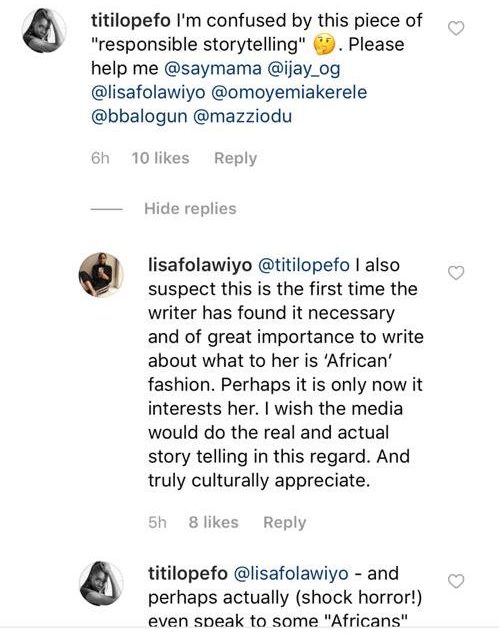
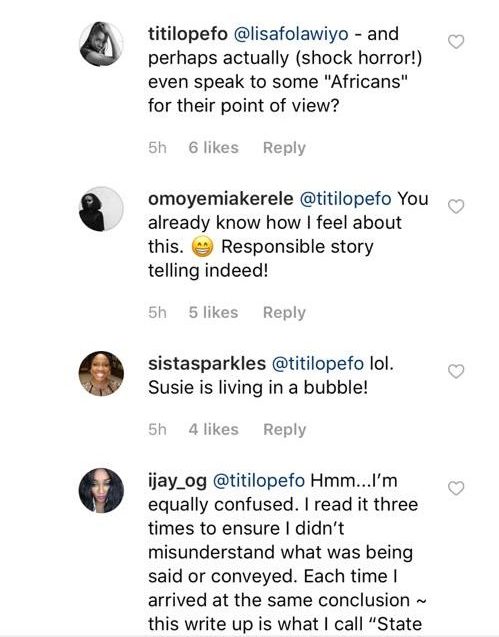
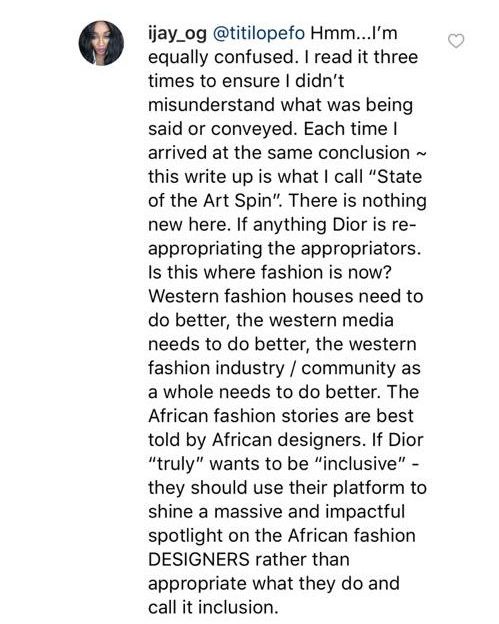
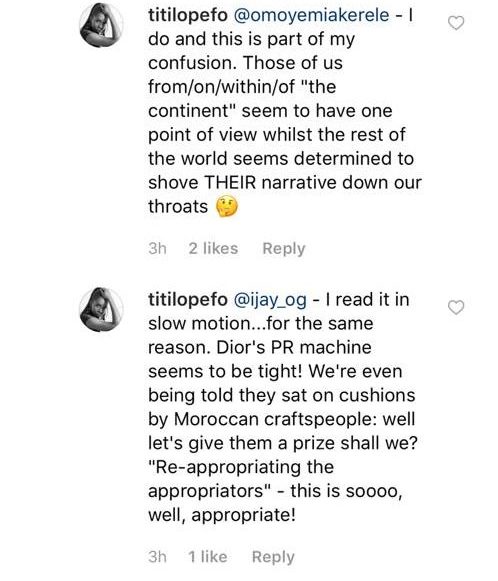
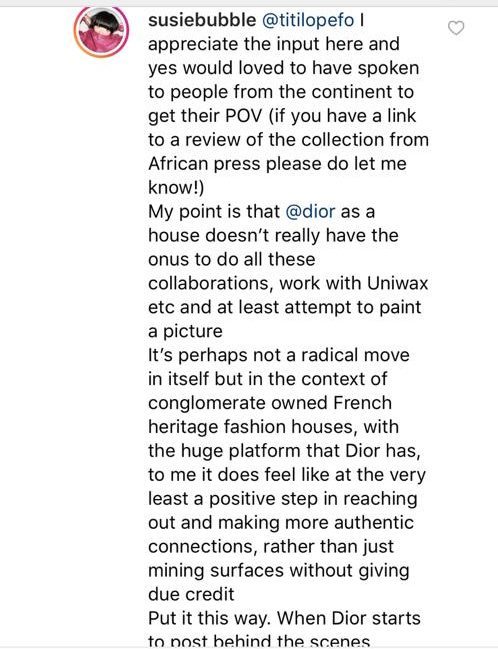
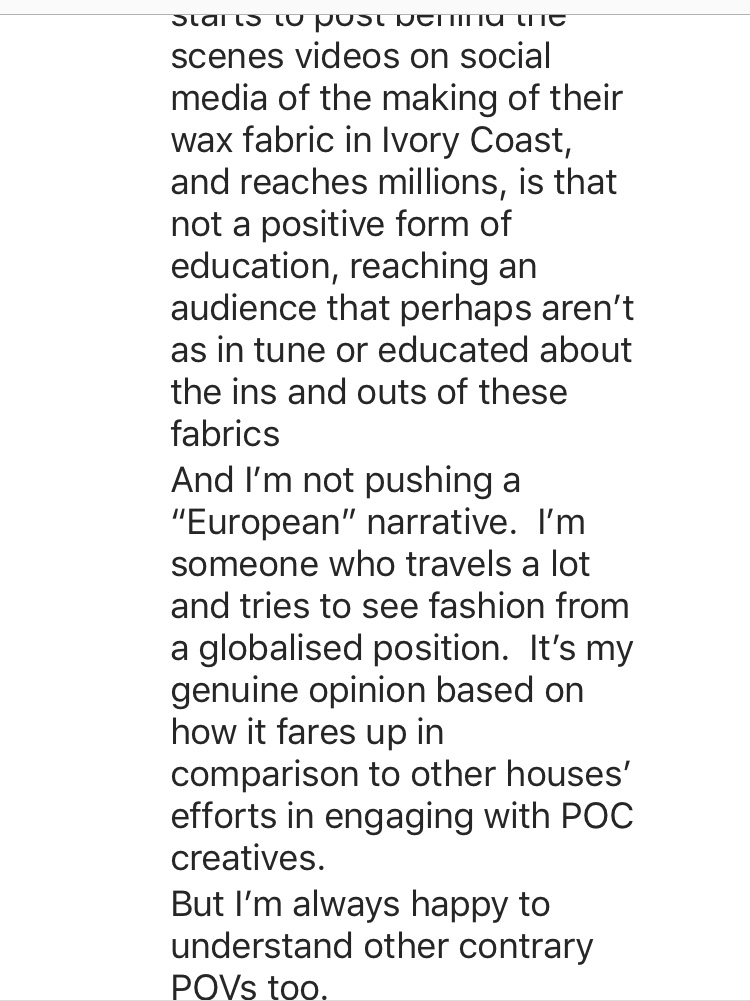
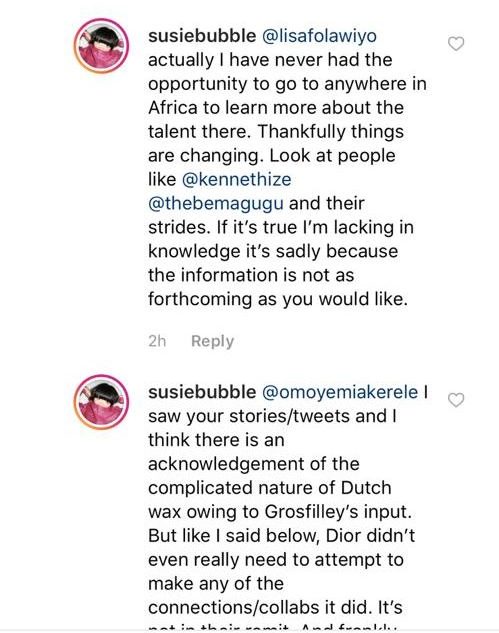
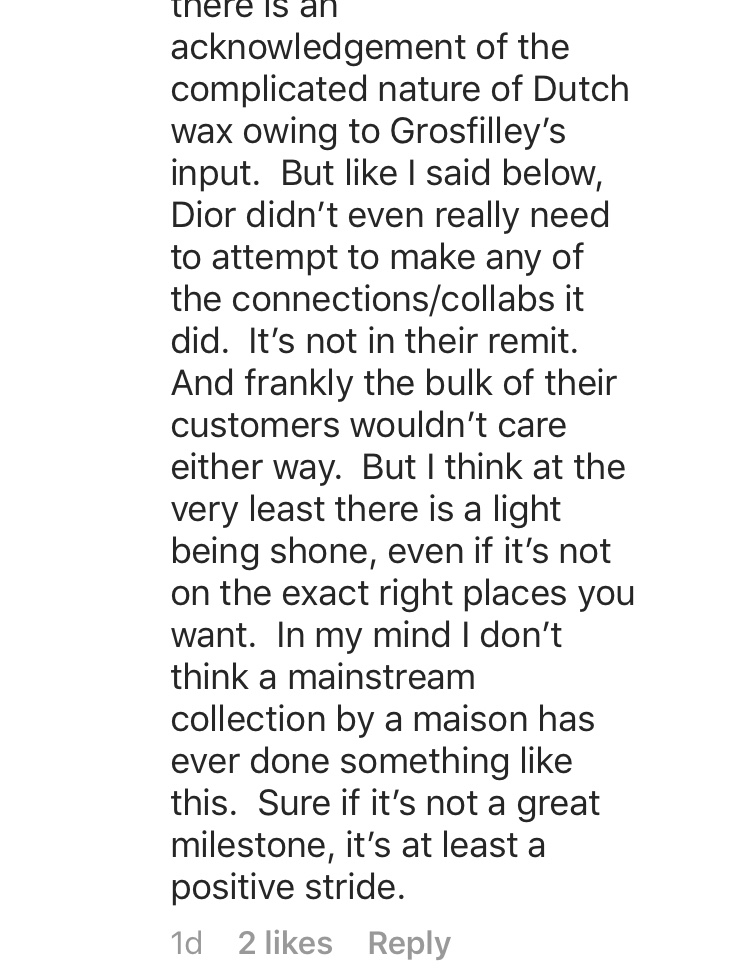
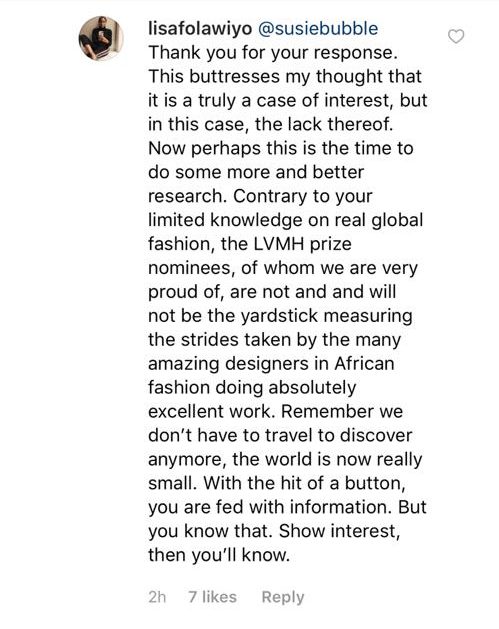
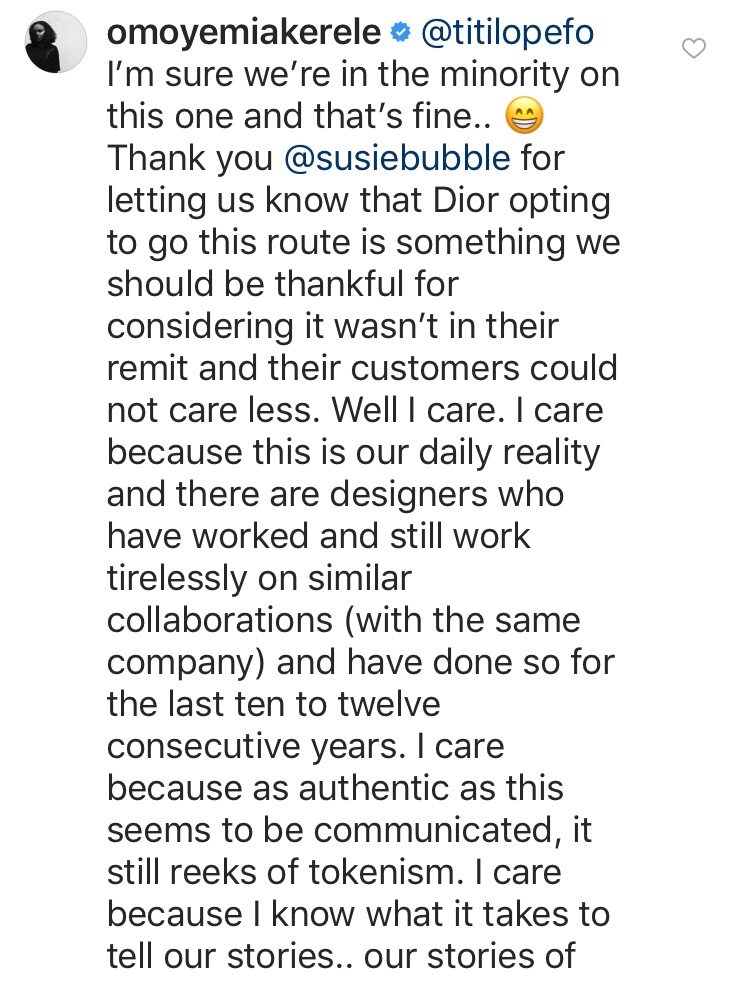
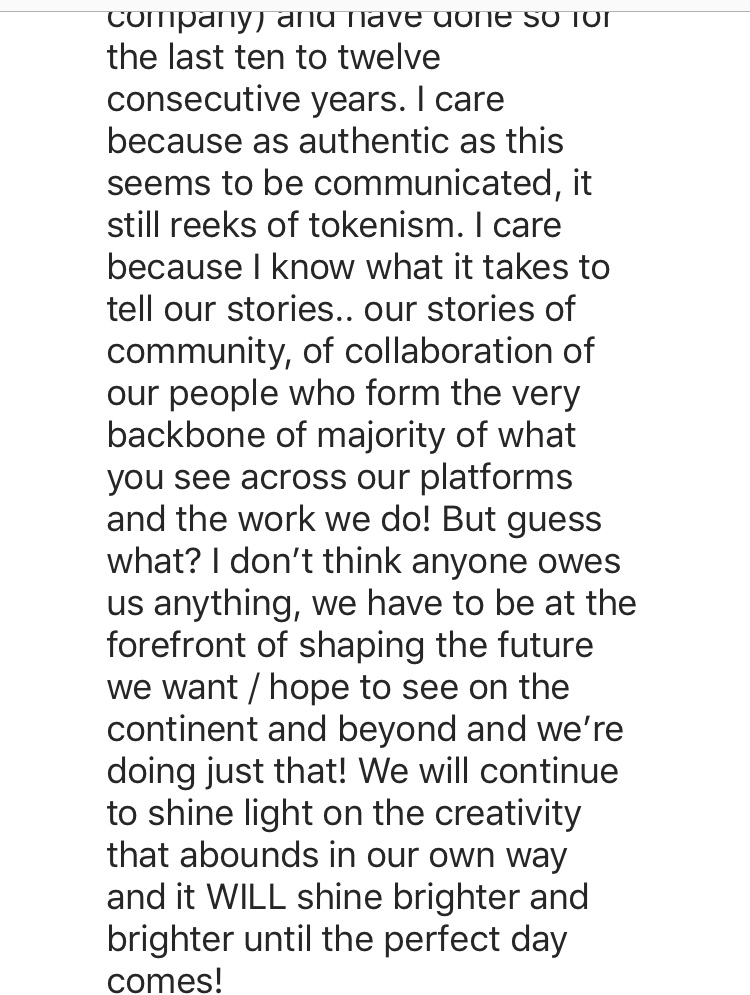

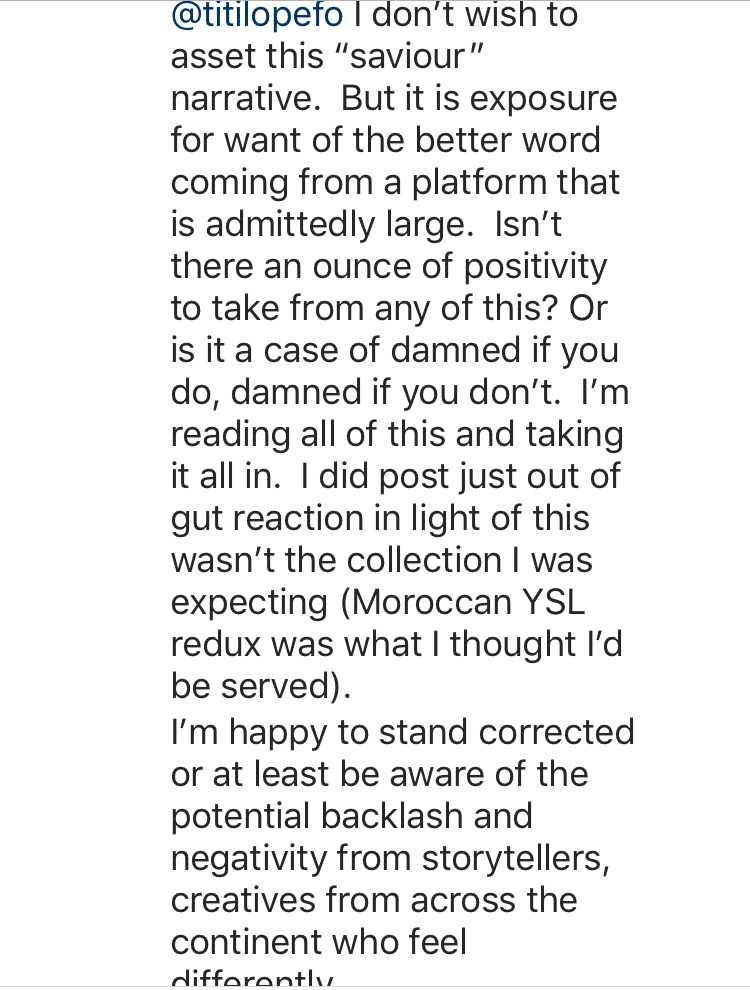
Not only does Susie ask us to educate her, saying she has never been to Africa, which is why she seems to only be aware of current LVMH Prize finalists Thebe Magugu and Kenneth Ize, she also points out that basically no one cares.
Really Susie?
In an effort to not speak only of the negatives, what would a really good collaboration look like? One that clearly draws lines between the global connections and actively utilises African resources, contributes to the economy of the country it is operating in. A genuine collaboration with leading designers from the continent, speaking to creatives working on the continent and actively engaging with the influencers and celebrities in the specific country. ( We hope the upcoming H&M x Mantsho collaboration can achieve this).
Or maybe one that’s thoughtful, honest and clear about what it’s referencing, without trying to hoodwink us about what the intended outcome is. To quote my Junior Editor Mary Edoro ‘Cultural appropriation, when done in a good way, makes us appreciate things we might typically ignore.’
Globalisation makes this a fraught and complex issue, as well as the ever-present dismissal of the African continent as a whole as a poor, corrupt and disease ridden space (unless we are speaking from a resource extractive or consumption perspective), but I truly believe that a laser focus on growing our own – industry, textiles and domestic economy will go a long way in combating the ‘Africa needs saving’ narrative and concurrently, the use and discard model of Western corporations, whether that’s Halliburton or Dior.
To quote the late great Audre Lorde
“Black and Third World people are expected to educate white people as to our humanity…. The oppressors maintain their position and evade their responsibility for their own actions. There is a constant drain of energy which might be better used in redefining ourselves and devising realistic scenarios for altering the present and constructing the future.”
So all I can say is Nigeria and the 50+ states that comprise our continent.
Do better, so outside validation becomes a moot point.

